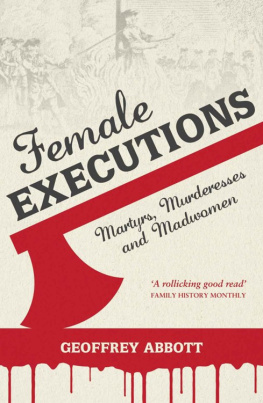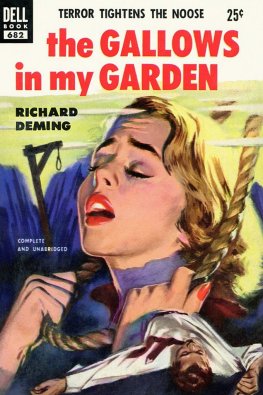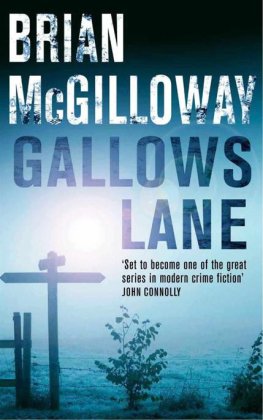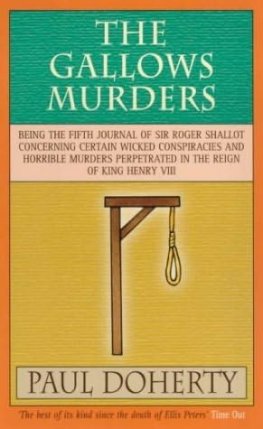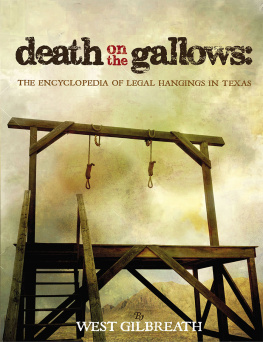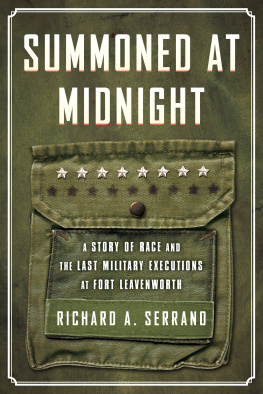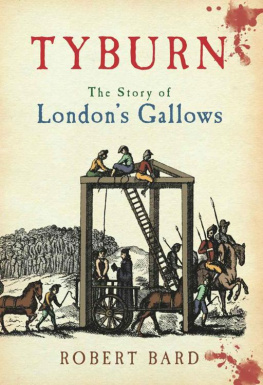This book is sold subject to the condition that it shall not, by way of trade or otherwise, be lent, re-sold, hired out or otherwise circulated in any form of binding or cover other than that in which it is published and without a similar condition including this condition being imposed on the subsequent purchaser.
OTHER BOOKS BY THE AUTHOR
The Executioner Always Chops Twice: Ghastly Blunders on the Scaffold , Summersdale, 2002
A Beefeaters Grisly Guide to the Tower of London , Hendon, 2003
Ghosts of the Tower of London , Hendon, 1989
Great Escapes from the Tower of London , Hendon, 1998
Beefeaters of the Tower of London , Hendon, 1985
Tortures of the Tower of London , David & Charles, 1986
The Tower of London As It Was , Hendon, 1988
Lords of the Scaffold , Hale 1991/Dobby, 2001
Rack, Rope and Red-Hot Pincers , Headline, 1993 / Dobby, 2002
The Book of Execution , Headline, 1994
Family of Death: Six Generations of Executioners , Hale, 1995
Mysteries of the Tower of London , Hendon, 1998
The Whos Who of British Beheadings , Deutsch, 2000
Crowning Disasters: Mishaps at Coronations , Capall Bann, 2001
Regalia, Robbers and Royal Corpses , Capall Bann, 2002
Grave Disturbances: The Story of the Bodysnatchers , Capall Bann, 2003
William Calcraft, Executioner Extraordinaire! , Dobby, 2003
Grave Disturbances, the Story of the Body-Snatchers , Capall Bann, 2003
A Macabre Miscellany , Virgin, 2004
William Calcraft, Executioner Extraordinaire! , Eric Dobby, 2004
More Macabre Miscellany , Virgin, 2005
Its a Weird World , Virgin, 2006
Whos Buried Under Your Floor? , Eric Dobby, 2007
The Gruesome History of Old London Bridge , Eric Dobby, 2008
Plots and Punishments , Willow Bank, 2010
Crowning Disasters and Royal Corpses , Eric Dobby, 2011
Execution , Summersdale, 2012

ABOUT THE AUTHOR
Geoffrey Abbott served in the RAF for 35 years then became a Beefeater at the Tower of London. He has written more than 24 books on torture and execution, has appeared in numerous TV documentaries as consultant or executioner and, by invitation, has written entries on torture and execution for the Encyclopedia Britannica . He once stood on the drop trapdoors in the execution chamber of Barlinnie Prison, Glasgow (as a fact-finding author, not a convicted criminal!) and has also experienced having a noose placed around his neck by a professional hangman the late Sydney Dernley, a man endowed with a great, if macabre, sense of humour! He lives in the Lake District and keeps his adrenaline flowing by piloting small, temperamental helicopters.

FOREWORD
Geoffrey Abbott is an enthusiast, a natural storyteller with a gift for resuscitating dead trifles. With inside information and access to the worst, he revels in shocking and enlightening.
He is an actor on a paperback stage relishing the role of narrator, star and epilogist. He defies you to leave his theatre until you have the players last words haunting your mind.
As a visitor to all of Geoffreys previous productions I heartily invite you to another triumph. Let the show begin!
Jeremy Beadle (19482008)
Jeremy Beadle was a keen student of true crime for many years. Before television beckoned he was a hugely successful tourist guide specialising in blood, sex and death. He won Celebrity Mastermind , specialist subject London Capital Murder 19001940, was the host of international Jack the Ripper Conferences and amassed one of the finest true-crime libraries in Britain.
To Michelle with thanks for her continued active encouragement, without which my pen is completely non-productive!
CONTENTS
INTRODUCTION
The Law, in its wisdom, did not differentiate between men and women when it came to passing sentence of death on those found guilty of capital offences, and so in these pages you will read how, in some countries, many women were first tortured on the rack, in the boots, by the bridle, the water torture or the thumbscrews. They were whipped and exposed to public humiliation in the pillory; they died by the rope, axe, and sword; by the electric chair, the gas chamber, the firing squad; by being pressed beneath heavy weights or boiled to death, by lethal injection or burned at the stake; by being drowned, or beheaded by the guillotine or Scottish Maiden. Nor, afterwards, were they all given a decent burial; some were dissected, others skinned to provide bizarre souvenirs.
A few, such as Margaret Clitheroe and Alice Lisle, were martyrs; some, such as Marie Brinvilliers and Mary Ann Cotton, were serial murderesses; others, like Elizabeth Barton and Mary MacLauchlan, were mentally unbalanced and, in more civilised times, would instead have been given the necessary psychiatric treatment.
Some executions were botched either by the executioners or by the equipment involved, yet despite the appalling ordeal they faced, some women were incredibly brave, some resigned to their fate; a few fought with the executioner, others were hysterical or in a state of collapse; some indeed were totally innocent, yet nevertheless were put to death.
But even the Law with all its sombre overtones has its lighter side, and so the cases are interspersed with quirky quotes.

MARTYRS, MURDERESSES AND MADWOMEN
A
Antoinette, Marie (France)
Nine long agonising months had passed since her husband King Louis XVI was beheaded by the guillotine, his execution ecstatically applauded by the revolutionary mob, and it was not until the dreaded day arrived, 16 October 1793, that the executioner Charles-Henri Sanson and his son Henri reported to the Conciergerie, the Paris prison, to collect Queen Marie Antoinette and convey her to the scaffold. In the vast room known as the Hall of the Dead Marie awaited, guarded by two gendarmes. Nearby stood Bault, the turnkey, whose wife had provided their distinguished prisoner with a cup of chocolate and a bread roll.
As the two executioners entered, the Queen stood up. The Vicomte Charles Desfosses, who was present, later wrote: I had time to observe the details of the Queens appearance and of her dress. She wore a white skirt with a black petticoat under it, a kind of white dressing-jacket, some narrow silk ribbon tied at the wrists, a plain white muslin fichu [a shawl or scarf] and a cap with a bit of black ribbon on it. Her hair was quite white; her face was pale, but there was a touch of red on the cheekbones; her eyes were bloodshot, and the lashes motionless and stiff.

